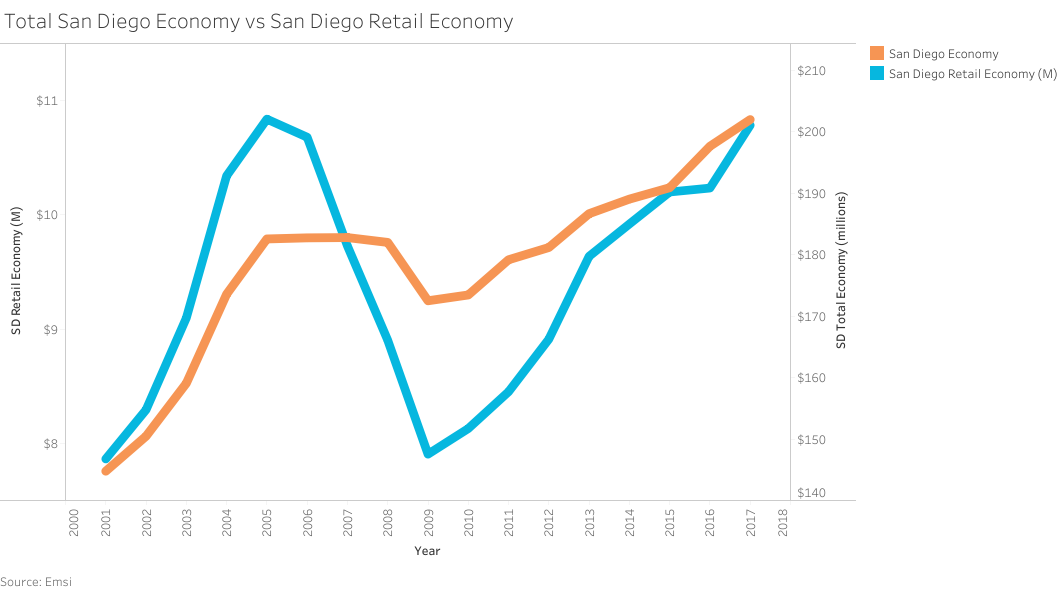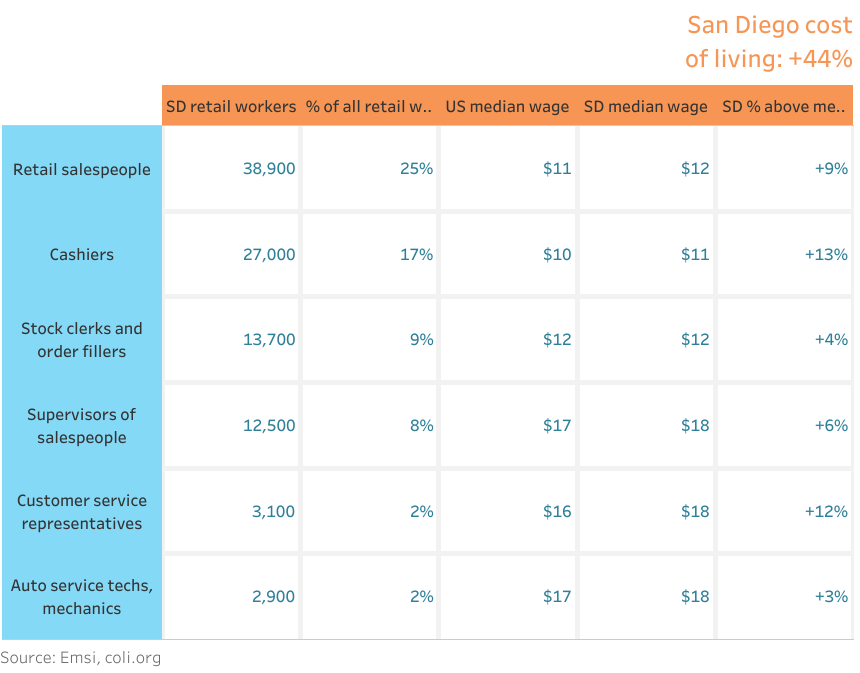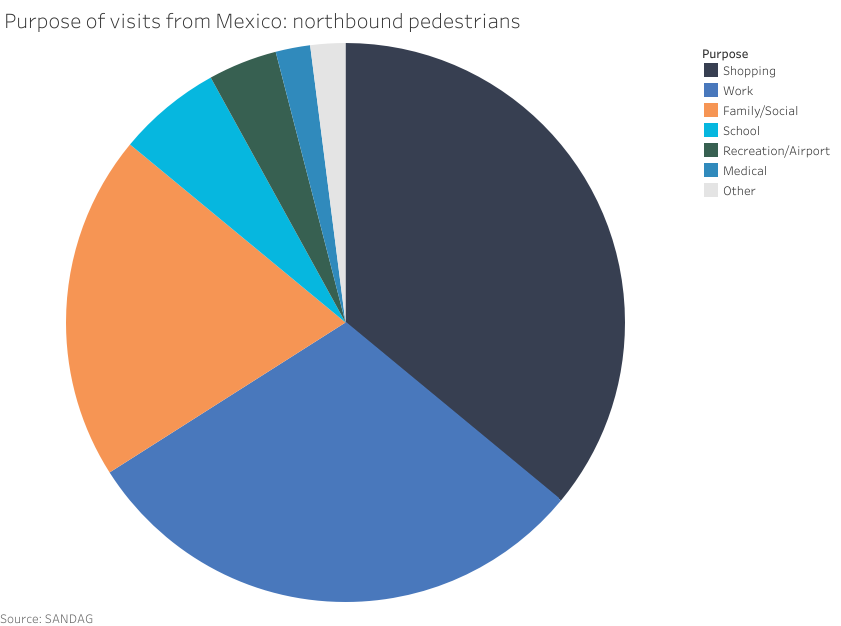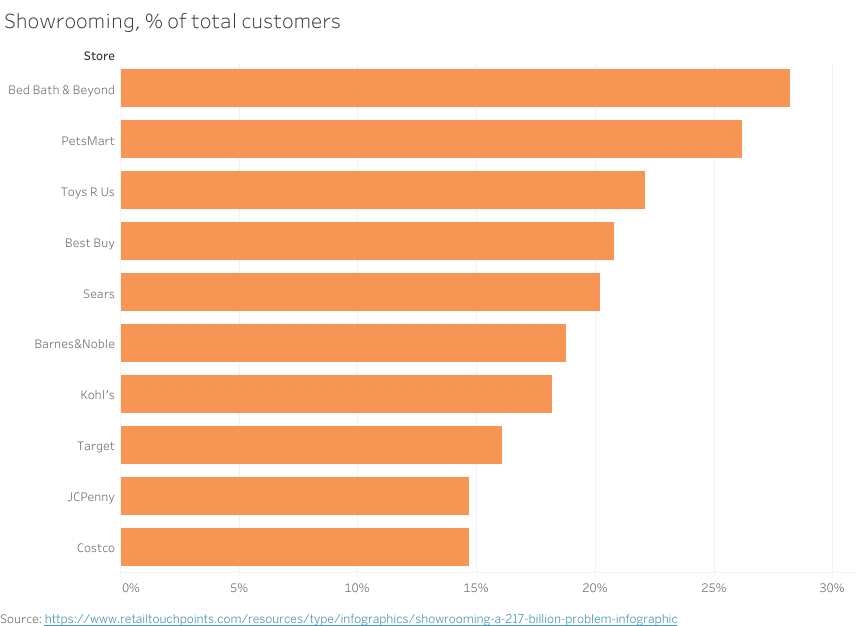
Together the Aspen Institute’s Economic Opportunities Program and Reimagine Retail Initiative, the San Diego Workforce Partnership and the Corporation for a Skilled Workforce undertook a year-long research project to understand possible social, economic and regulatory forces acting on the retail sector in San Diego County.
We focused specifically on the impact of changes in technology, cross-border purchasing and employment patterns, the rising minimum wage and racial disparities. This research has helped the Workforce Partnership develop new approaches to its work with retail employers and workers to support their resiliency in the face of a changing sector.
Overview
Retailers’ approaches to labor lie on a continuum from low to high investment.
Low-investment employers view labor as a cost to be minimized (paying minimum wage, using just-in-time scheduling, hiring part-time workers to avoid offering benefits).
High-investment employers view labor as a source of value to be optimized (paying to recruit & retain productive workers, training and incentivizing employees to sell more product, providing opportunities for advancement).
We believe high-investment employers will do better over the next five years, as
- higher minimum wages make labor more expensive and
- e-commerce undercuts physical stores on price and convenience, making customer service stores’ primary value proposition.


Retail makes up 5% of San Diego County’s economy ($12 billion out of our $200 billion gross regional product), and 9% of employment (150k of our 1.7 million jobs). Despite a large piece of the economic pie, however, median wages sorely lag behind regional costs of living.
While San Diego County retail workers earn anywhere from 3% to 13% higher than the national median wage, the cost of living in San Diego is a whopping 44% higher than the national cost of living.
For context, San Diego County’s average rent hit an all-time high in September 2018 of $1,960 a month, which means annual rent of more than $23k. An average retail salesperson in the county makes just $12.79 an hour, so even if they work 40 hours a week, that’s just $26,600—not enough to cover necessities like rent, transportation and food.
The role of our international border
Another finding from our collaborative research is the impact the border has on San Diego small businesses, particularly those along the San Ysidro border.
San Ysidro border crossers spend $15 million per day on retail in San Diego County.
Jason Wells of the San Ysidro Chamber of Commerce said in a recent Voice of San Diego article, “95% of our clients [come] from Mexico. Every change in the peso, every minute of wait time, every person that doesn’t cross affects us.”

SANDAG research shows that 36% of northbound pedestrian visitors and 39% of northbound visitors in private vehicles stated shopping was the primary purpose of their visit.
When crossing becomes impossible for visitors at the San Ysidro border crossing, businesses in San Diego County lose at least $5 million per day.
One store manager in South Park noticed a recent drop in customers from across the border. “Unfortunately, I think xenophobia has been detrimental, and pushing this whole idea of nationalism has had a big effect on retail.”
Competition from e-commerce
E-commerce is another trend affecting the regional economy, in particular a practice known as “showrooming,” where shoppers investigate products in a store but purchase online, often from competing retailers. It is estimated that showrooming costs retailers $217 billion per year.

Leading strategies for selling to showrooming customers rely on training:
- Price-matching requires workers to recognize showrooming and selectively offer to match price
- Cross-selling is also effective and requires training
- Bundling multiple goods together can prevent comparison shopping, but salespeople must be trained to promote
- Customer loyalty is driven by customer service
We believe workers’ soft skills are stores’ most important asset. Knowledgeable, helpful, reliable, courteous, problem-solving workers drive customers’ intent to shop and recommend the store to peers. Positive relationships with retail workers drive consumer satisfaction, trust and loyalty. Without customer service, there is little benefit to buying in stores, especially as same-day delivery becomes popular.
Unfortunately, customers report lower satisfaction shopping at the top 10 top U.S. stores than shopping at those stores’ own websites.
In a recent San Diego Union-Tribune article, Anjee Solanki, national director of retail services at Colliers International explained that as the technological landscape shifts, “It’s no longer sales per square foot, it’s experience per square foot.”
Minimum wage and the changing regulatory environment
Minimum wage is scheduled to reach $15 by 2023. While it is impossible to know how many San Diego County residents earned minimum wages in 2018 (census data on hourly wages is unreliable), we do know that about 45% of San Diego workers report making $15 or less per hour, so the increases are likely to directly affect about half the population.
We can’t know ahead of time how exactly the higher minimum wage will impact San Diegans, but most economists agree it is likely to have the following effects:
- Workers will likely stay in their jobs longer
- The share of San Diegans with incomes below the poverty line will likely decrease
- A very small portion of workers may lose their jobs
- Workers may lose hours
- Low-wage jobs like retail may grow at a slower rate
- Any negative effects are likely to impact teens the most
The effects of the minimum wage increase on employers include:
- The cost of minimum wage compliance is not just raising sub-minimum wage wages
- Payroll taxes and the need to preserve existing pay-scales will increase compliance costs
- Even large minimum wage costs are often not the main driver of cost increases in retail, since labor costs are only 10–20% of revenue, and other costs like real estate and supplier contracts are continually increasing
- Minimum wage increases partially pay for themselves
- Lower turnover
- Higher worker morale/effort
- Higher applicant quality
We know that many employers want to be paying their workers more. One Normal Heights thrift store executive reported, “We were already paying above minimum wage and then with the help of the Workforce Partnership we were able to go to $13.09 per hour. So your grant helped us get to that next step. When the grant left we didn’t go back down. We still maintained that level, so that’s why upping our sales is so important.”
Predictive scheduling
GAP Inc., CVS, and others have found that advanced scheduling can actually improve performance. There is an increasing drive for stable scheduling laws across the country requiring retailers to schedule workers two weeks in advance.
Inequality
In San Diego County’s overall economy, 8% of the variation in average wages between occupations is explained by the proportion of people in that occupation who are white; in the retail sector, 51% of occupational wages are explained by the proportion of workers who are white. This means nonwhite workers are less likely to get jobs with high earning potential, and that occupational segregation is a big problem in the retail sector.
Our response
We are responding to this research with several new programs. For example, we are developing a Social Media Marketing Academy to train retail workers to help small employers advertise and sell online. We are developing an experiment to see if we can reduce racial inequality through targeted career services. We are working with employers to help them communicate advancement opportunities so they can recruit and retain the best workers.
For more information on these topics and ideas on how to respond to these challenges, explore our full suite of retail research at workforce.org/research/retail. Contact research@workforce.org with specific questions or comments.
